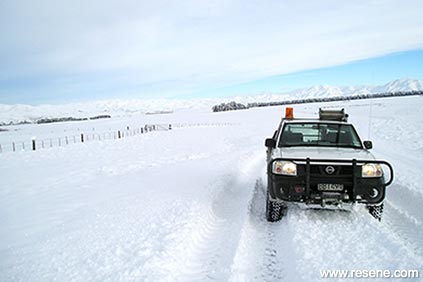From Habitat magazine - issue 14
We live in a volatile world of earthquakes, floods and storms. Are you ready if disaster strikes?

The tragic Christchurch earthquakes have been a wake-up call, reminding us that natural disasters can strike in any place at any time. Nobody can afford to be complacent, says Vince Cholewa, public information officer at the Ministry of Civil Defence and Emergency Management, and the key to coping when a disaster strikes is being prepared.
The devastation caused by the earthquakes and the Australian floods and cyclone is still fresh in our minds. Whether it is these or other catastrophes, we should be aware of the biggest threat posed in our area. Whatever the disaster, the same basic rules apply. Check out www.getthru.govt.nz (or Emergency Management Australia), for information on preparing for all kinds of natural disasters. The key thing, Vince says, is to have a survival kit – enough food and stored water for at least three days – and having an action plan for the whole family. “Preparedness is weakest when you’re not at home,” he says.
So often, when a disaster hits, parents are working, the kids are at school and elderly relatives are somewhere else. “You must know how you’re going to get hold of one another, especially if the phones are out. Work out where you’re going to meet if something happens and how you’re going to get back home if you need to. If your children are at school, make arrangements for them.”
Find out your community’s warning systems and evacuation routes from Civil Defence emergency management staff at your local council. Discuss and practice your evacuation plans with your family.
Everybody should have stored water in easy-to carry containers, both at home and work, refreshed every year. If water quality is a concern, add three or four drops of bleach to the water and within half an hour it will be drinkable. If the water supply is cut off or water and sewage lines damaged, you should also know how to make an emergency toilet.
It’s a good idea to have alternative heating to your normal source in winter. If you have glasses or rely on medication, keep some at home and work. Women should also keep a pair of walking shoes at work.
Your district council (not central government) is responsible for planning and coordinating welfare agencies during emergencies so make sure you have their phone number at home and work.
Emergency information will be broadcast on local and national radio stations. Know which stations to listen to during an emergency event. Also, if the power is out, you’ll need a battery powered or dynamo radio.
With our reliance on mains power, many of us also have only portable phones that don’t work when the power fails. Corded phones are inexpensive and we should all have one somewhere in the house.
Lastly, don’t forget to insure your home before a natural disaster strikes. If you don’t, you’ll have to pay for the damage yourself. The government funded Earthquake Commission insures against damage caused by earthquake, natural landslip, volcanic eruption, hydrothermal activity, tsunami; in the case of residential land, a storm or flood; or fire caused by any of these but only to those who have existing private insurance cover.
A common mistake people make, says Chris Ryan of the Insurance Council of New Zealand, is having a lower level of cover than expected or being underinsured and not getting the level of contents cover required. Some people haven’t read the details of their policy documents to see what is actually provided. Damaged items may be assessed for repair, and not automatically replaced with a new item.
words: Vicki Holder
picture: Ministry of Civil Defence
Search habitat magazine stories
Printed copies of habitat highlights are available from late March 2024 at Resene ColorShops and resellers, while stocks last. You can view back issues of habitat magazine online.
Specifiers:
If you have an idea, project or story that you think would suit habitat, we’d love to hear from you. Please drop us an email with your details and include photos if submitting a project.
Sign up for a DIY card and Save! Australia | New Zealand